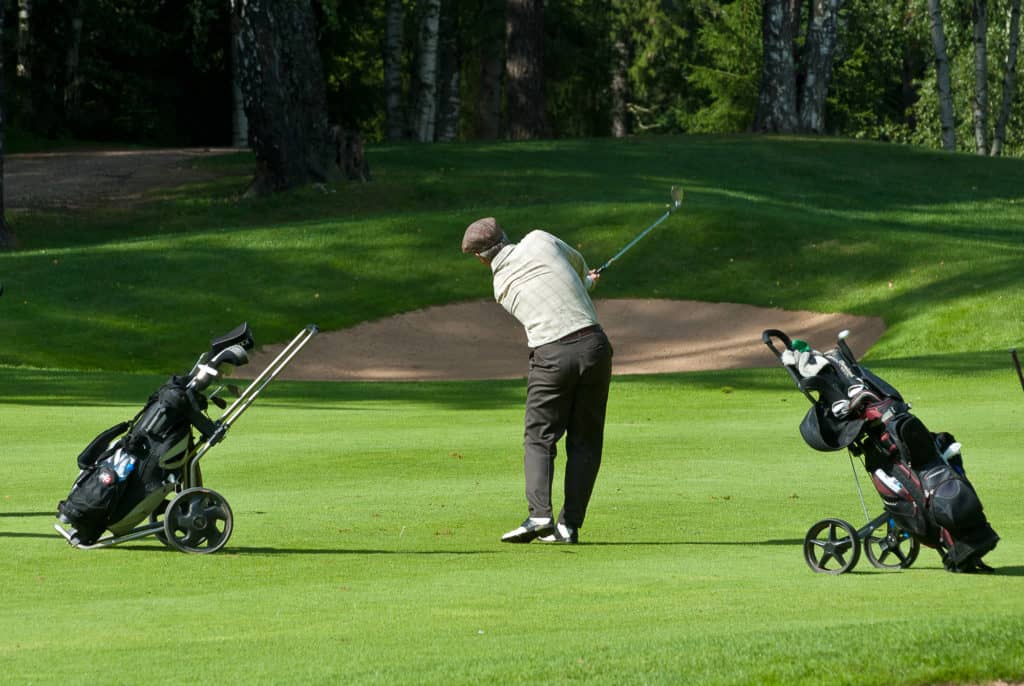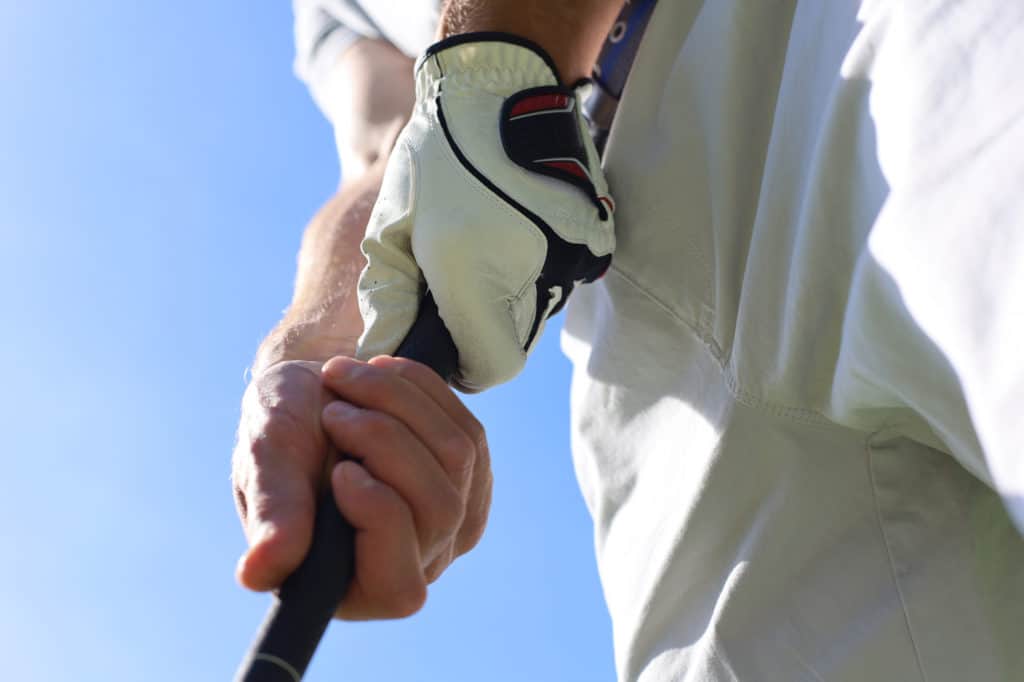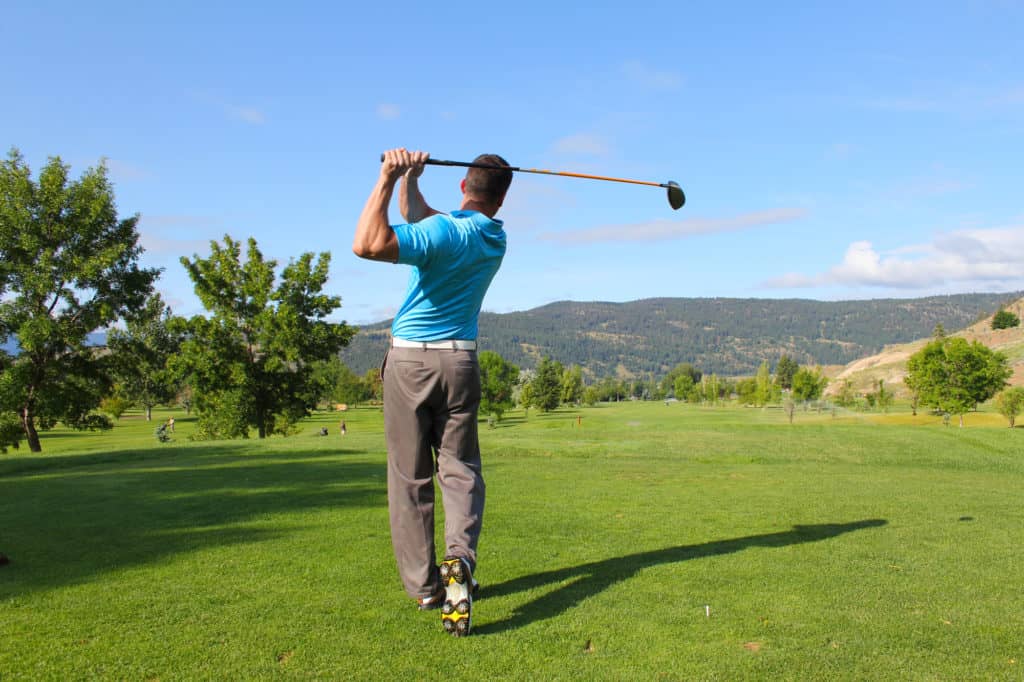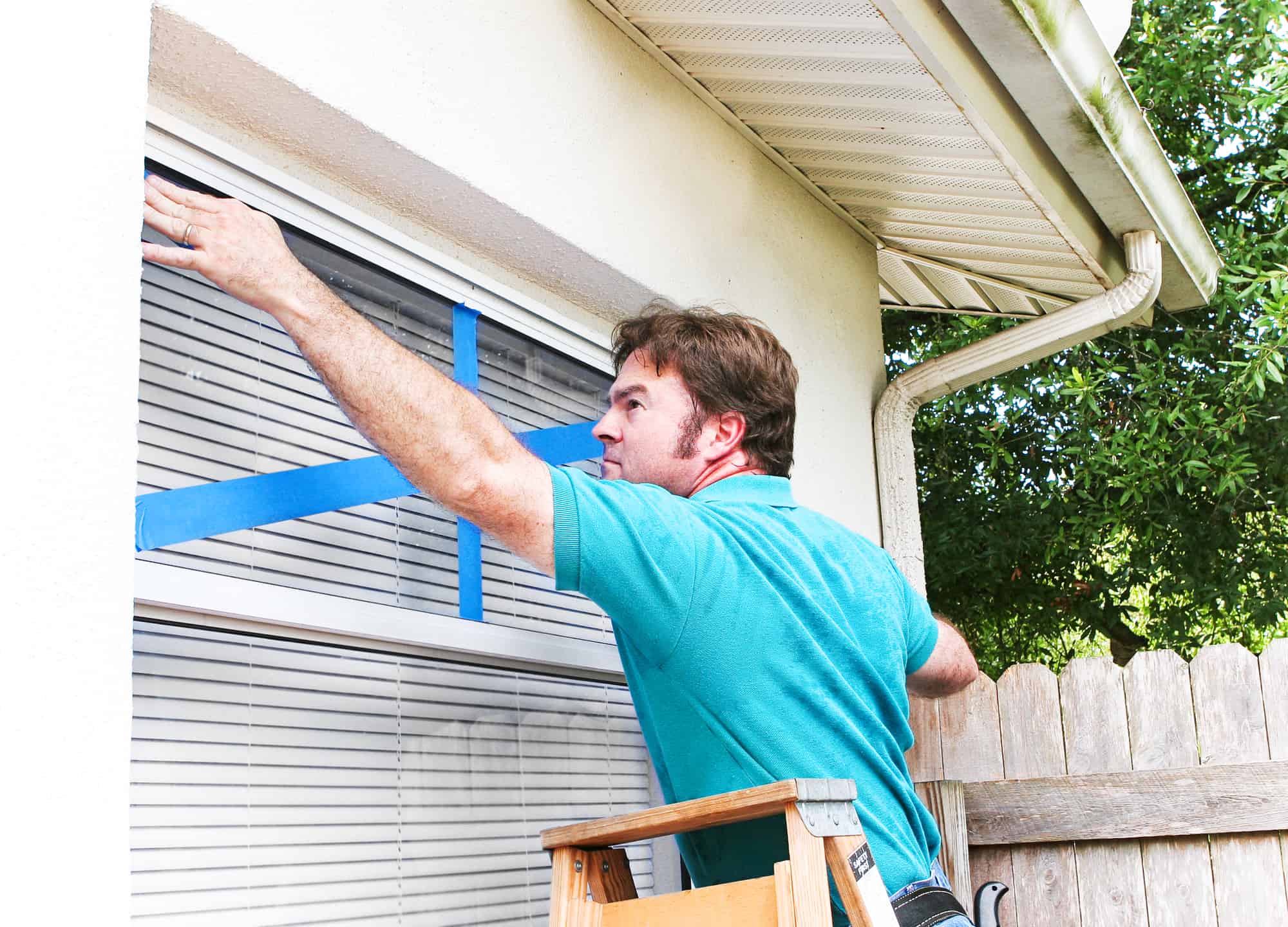
It’s good to know your yardages when you play a round of golf.
Some people also like to know how far others are hitting the ball.
Sometimes this can help you gauge whether you could be getting more distance or if the clubs you are hitting are a good fit for you and your abilities.
The hundred-yard shot is an important one in golf, and it’s a good idea to gauge how far you are hitting this shot and have some strategies for hitting it less.
What Club Would Most Golfers Likely Hit from 100 Yards?

The majority of golfers are going to hit their gap wedge about one hundred yards.
Some people call the gap wedge the approach wedge or the utility wedge, but they are referring to the same thing.
The gap wedge is built with around 50–52 degrees of loft, and that is the perfect angle for most players to get one hundred yards of distance.
If you have a very fast swing speed, you will likely be able to hit your sand wedge about 100 yards.
Some players with slower swing speeds will probably hit their pitching wedge 100 yards.
What Club Would Most Golfers Likely Hit from 50 Yards?

The fifty-yard shot can take a bit more finesse and feel than a 100-yard shot.
For most golfers, the 50-yard shot is not going to be a full swing but a partial swing.
Once you have been playing the game for some time, half swings are usually not an issue.
When you first start golfing, only taking a half swing can lead to some ugly shots.
If you want to hit the ball about 50 yards, the sand wedge is very likely going to be your best choice.
Some players may try and hit a lob wedge, and for some, it could be a full swing lob wedge shot.
When you are fifty yards from the green, it’s essential to consider the types of shots you can hit.
Sometimes hitting a high trajectory shot to try and get it to stop on the pin is not a great choice.
Keeping the ball lower to the ground usually results in a better golf shot.
What Types of Shots Can You Hit from 100 Yards?

Just because your gap wedge or approach wedge is your 100-yard club, this does not always mean you should be hitting it into the green.
Sometimes there are course conditions and playing conditions which require a different type of golf club to be used.
There are endless ways you can hit a shot to a green 100 yards away.
Here are a few of our favorites.
1. Choke Up on a Nine Iron

If you don’t like taking full swings and you want to hit shots that roll and play with the natural undulations on the golf course, then a nine iron could be a great choice from 100 yards.
With this club, you will choke down on the grip and make your stance a bit more narrow as well.
Chances are you won’t need a full swing, and instead, a bit more of a three-quarter-type swing.
This is usually a comfortable backswing length for most people, and they can repeat this without much trouble.
Sometimes the nine iron has a thick sole to it, which gives players the confidence they need to get the ball in the air.
When you practice this shot, be sure you leave room for the ball to roll once it hits the green.
When a golf ball hits the green with a nine iron, it won’t have nearly as much spin as a sand wedge or a gap wedge.
As long as you prepare for that, this can be a great option from 100 yards.
2. Bump and Run with a Seven Iron

When you are playing in windy conditions or playing more of a Linx style golf course, sometimes the seven iron bump and run shot can be good from 100 yards.
Chances are with this shot, you will need about a half-swing, and you may only carry the ball about three-quarters of the way to the hole.
Since this shot depends on quite a bit of roll, it does not always work well when you are going uphill.
If the ball gets up in the air and then lands on the hill and backs itself down, you will end up with another long shot into the green.
These types of bump and run shots work well when the ball is traveling downhill towards a target, and the grass is cut relatively short.
If you have a bunker or a water hazard between you and the hole, this is not the best choice of shot to hit.
3. Fade With a Pitching Wedge

Since the pitching wedge is only one club removed from the gap wedge, you could attempt to take a little distance off this club and take an easier swing.
With this method, you will probably want to open your stance a little, potentially choke up a little, and plan to play a slight fade into the hole.
This option works well when the pin is on the right side of the green.
When you hit a fade, it generally takes a few yards off the shot and allows a softer landing as well.
If you think you may be 105 yards and your gap wedge could come up a little short, this is an excellent club to make sure you get to the center of the green.
4. Full Swing With a Gap Wedge

Lastly, you have the option of taking a full golf swing to a pin.
Although most golfers will choose a full swing into almost any green they can, it is essential to realize your options.
Low handicap players have a large variety of shots they can hit, and having these extra shots helps them score.
Sometimes a full swing shot into a hole is not the best option, and when you start to realize these things in the game of golf, you will start to lower your scores.
Being a great golfer takes so much more than great swing mechanics.
You must be good at observing the golf course and having several types of strategies.
Should the Gap Wedge Match the Irons?

Since we have established that the gap wedge is a very important club in your bag, it pays to make sure you have a great wedge.
The gap wedge will usually come as a matching pair to your iron set, or it will come as a separate wedge style club.
Generally speaking, the higher handicappers like the gap wedges that match their irons.
Lower handicap golfers like more blade-style wedges that will match with their sand and lob wedges.
This is going to come down to a matter of preference for most players.
There are positives and negatives to both styles.
For the wedge that is built to match your iron set, you get a lot of consistency in the set.
If you enjoy taking full swing shots with your approach wedge and it is a shot you use quite often, this is usually the best way to go.
The only real downside to these types of wedges is that you will probably not get quite as much spin and workability.
These wedges are harder to hit out of bunkers, and it can be tough to open the face to hit high lofted shots around the greens.
When you use a traditional wedge for the gap wedge, you will want to choose 50, 52, or 54 degrees of loft.
With a wedge like this in your bag, you will get lots more spin and the ability to hit different types of shots around the green.
The gap wedge built like a blade-style wedge is also a great choice if you want an extra option out of the bunker.
These wedges are built to spin and help you get closer to the pin even when you have thirty or forty yards to the hole.
The only real downside of this style wedge is that they aren’t as great for a full swing shot.
Most of the time, they will offer much less forgiveness and cause some issues when it comes to misses on the full swing shots.
For lower handicappers, this is not usually a problem, but for higher handicappers, it is something to consider.
Conclusion
Most golfers hit their gap wedge about one hundred yards, but as you can see, you don’t only have to use your gap wedge.
You can use various clubs to achieve the same yardage, and it’s a great practice to work on distance control.
Make sure you are comfortable with the gap wedge you have in your bag and choose the proper style for your swing and your handicap.
If you don’t have a gap or an approach wedge in your bag currently, be sure to add one today!



Leave a Reply